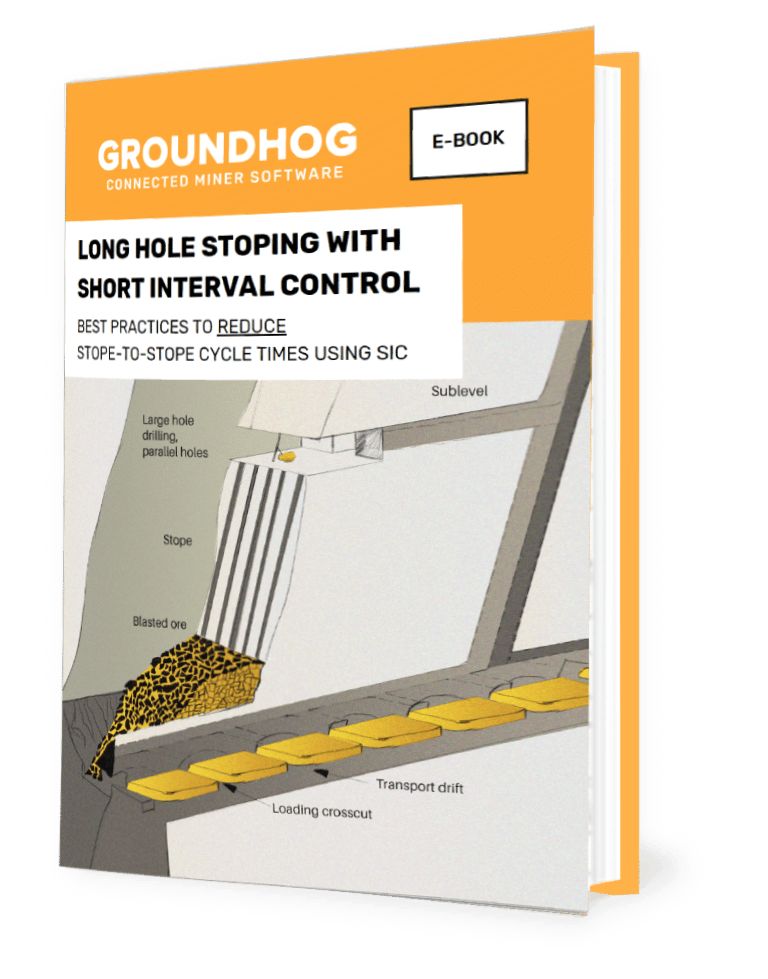Mining Short Interval Control for increased production and productivity

Mining Short Interval Control is an Industry 4.0 process. However, Industry 4.0 cannot exist without infrastructure 4.0
Systems today are susceptible to risks when businesses are unprepared to handle changing conditions. Sometimes major shocks cannot be predicted, but we can work to reduce the fragility within systems. Customer-centric antifragility, specifically, not only prepares the supply chain for when—not if—a disaster occurs, it also prepares the supply chain for a future uncertainty.
Mining Short Interval Control or SIC is a structured system that periodically reviews the data from mining processes and takes action in response to them.
All teams across the mining facilities are trained to collect, analyze, and react to this data to drive significant improvement in performance from the factory floor or mine site. When implementing SIC adeptly, there is a substantial improvement in Overall Equipment Effectiveness (OEE). For example, a site with 60% OEE improved to 65% OEE within three months and 75% OEE in under two years.
Successful implementation of Mining Short Interval Control will yield the following benefits:
Improved OEE by focusing on immediate and relevant losses
Improved productivity using high-quality data at its source to promote decision making
A quick rate of improvement as local emphasis improves operational speed
Increased employee involvement as teams gain significant control over how the line is run

What is Mining Short Interval Control (SIC)?
SIC is implemented as a series of short and focused reviews that are typically carried out every two or four hours by front-line teams. During the examination, personnel in the front-line units carry out the task of reviewing losses and identifying actions to improve performance in the future. A useful short interval control process involves identifying and implementing practical actions to improve performance in repeated cycles. During each SIC review, the front-line personnel completes a series of steps to achieve this goal:
- Reviewing the previous interval
- Review losses of the prior interval, evaluate the top losses for potential countermeasures
- Assess previous actions, evaluate their effectiveness, and whether follow-on actions are needed.
- Looking ahead to the next interval
- Identify risks, identify upcoming conditions and changes that may adversely affect performance
- Decide on a specific set of actions that will be completed during the next interval
The following diagram will provide a clear picture as to how SIC is implemented.
Short Interval Control was first built as a factory process

Further in this article, let us explore and understand how short interval control can help improve mining. We will also explore how a modern implementation of SIC or digital SIC can help improve production and efficiency during shifts.
Challenges in Mining without Short Interval Control
Mining has always lacked manufacturing. In underground mining, the task delays, data about the task and resulting interventions are handled by the mine workers and their shift supervisors. The data reaches the management only at the end of the shift. This implies that the impact on production targets can only be evaluated at the next production meeting. The cumulative impact of data (in)accuracy, knowledge latency, and sluggish response causes significant inefficiencies, time wasting, and cost escalations. There are many difficulties in underground mining even today. In the present setting, the accompanying difficulties are the most widely recognized among miners today.
Manage multiple core mining tasks
Core mining activities such as development, drilling, blasting, mucking, filling, and ore transport are difficult to manage using slower methods.
Achieve sustainable production rate targets
The assignment of people and resources to activities, and the coordination of all the activities to achieve controlled production rates become overwhelming when using legacy systems.
Capture accurate data
The usage of call-in reporting via radios and paper are proving insufficient to calculate accurate production figures, and also to forecast for the next shift.
Practical Mining Short Interval Control
Over the years, underground miners have been using many variations of Mining Short Interval Control to make operations more efficient and seamless. Until now, most implementations of SIC has been to control production. Miners and supervisors would do this by setting goals for individual operators.
Operators would perform their tasks against goals assigned to them. These would be reported via the paper at the end of the day, either call-in or paper submissions. SIC has evolved over the decades and now allows mining operations managers and supervisors to forecast employee shifts, ensure safety, and control production.
Until recently, miners have been active and efficient in managing short interval control operations on paper. This method of Mining Short Interval Control worked doing great until the mining industry experienced a seismic downfall in the resources market. Today’s competitive commodities and resources market is forcing miners to change strategies to continue being profitable. And how do they change strategies? How do you, as a miner, change strategies that have worked brilliantly for so long?
Here is where technology experts and technology companies come in. Thanks to the rapid adoption of mobile technologies and the falling cost of mobile hardware, it is now possible to do powerful things using affordable mobile technology.
Companies across the industry have benefited from shifting traditional methods of paper-based data collection to mobile-based data collection. This is what they call the digitization of information. Collecting information using a mobile device opened up a new world of possibilities for many companies. By harnessing data that is now available digitally, the management gains the intelligence to pursue new goals in a more strategic, data-oriented framework. Successful application of Mining Short Interval Control requires a key condition that your team has the skills and the desire to make improvements to the production process. With the right set of tools, your team is now equipped to measure current happenings and identify areas to improve performance.
Digitization of Data Collection for Mining Short Interval Control
The usage of real-time information has become increasingly common in underground mines. Tracking and monitoring personnel safety, monitoring, and tracking equipment, monitoring ventilation must be taken beyond conventional methods today.
One way to do this is by using sensors. Internet of Things or IoT devices are smart, affordable devices fitted with sensors that capture data. There are various sensors for various types of data. The data captured is sent in real-time to the control center.
Paper-based inspections must move to digital inspections. Smartphones and tablets can be used to capture more data, such as operational checklists, inspections, and others. Enabling technologies have advanced significantly to a point where it has now become highly cost-effective to implement all of these ideas.
Digitization of Production Scheduling for Mining Short Interval Control
Short interval control is primarily focused on production control. As discussed earlier, a standard is yet to be defined for the mining industry. SIC enables mine operators to track and revisit operating and performance plans based on targets, metrics, and KPIs. Variances may be evaluated and mitigated in real-time for immediate corrective action during a shift, or they can be checked and recorded after the shift.
In essence, a digitized short interval control enables creating a super-fast feedback loop on the production tracking against expected production at short intervals. This is made possible using a multitude of interconnected seamless technology pieces working together to manage and track production.
While a standard short interval control system has been used in mining for many years now, the core benefit of digitizing production control is to improve the speed at which production can be tracked, and consequently (automatically) matched to expectations.
Digitization of production control requires a cutting-edge scheduling system that:
- Imports your mining long-range schedule and “tunable parameters” from your production plan.
- A capability matrix that identifies skill and effectiveness index, identifies and matches operators to the most effective equipment, creates shift task lists for supervisors to review and dispatch.
- It is integrated with KPIs and reports to allow supervisors, operations managers, and management to get insights and facilitate optimization as required.
Digitization is about bringing operators and supervisors closer to understanding where the entire mine stands with respect to overall goals for the day, week, month, and the year.
Technically, operators or supervisors in a mine must be able to view their production targets and completed targets. Modern technology, such as mobile apps, allows the capturing and reporting of this information seamlessly. Note how easy it is for operators to know their shift targets and report their progress in real-time to the operations command center.
In the past, technology platform changes have often been quite expensive and very risky in some cases. Moreover, the learning curve to onboard personnel to these platforms was usually quite costly and steep. Today, technology has advanced rapidly in the last decade, and all of the techniques discussed in this article are very affordable to implement. For example, IoT devices such as sensors are less than a few dollars; these capture data and send them to any computer or device of choice. Advancements in mobile technology have made smartphones and tablets with powerful computing capabilities affordable for large scale implementations.
Great user experience in such digital short interval control solutions reduces the amount of time it takes to onboard your staff to this platform. A mobile application for reporting is also a great companion to radio communication elevating the culture of being live and up to date. Short Interval Control (SIC) has its foundation in manufacturing. It is about monitoring task execution against its expected completion in a shift at regular intervals and, if necessary, reducing deviation to ensure that shift goals are achieved, resulting in sustainable production.
The changing landscape of Mining
The competitive landscape is gradually shifting leading to mining companies exploring both vertical and horizontal opportunities. While digitization and modern technology can help drive vertical progress and business optimization, smart and intelligent usage of data can drive new value creation in the mining chain. There is immense potential that this new value creation could be internal, or external leading to new channels of revenue, partnerships, and growth.
A clear strategy is absolutely essential. A plan that outlines why you are digitizing, and how this is going to change the value proposition today is essential. Secondly, a plan that outlines how implementation of new technology is going to secure existing or build new competitive advantages must be built, and understood by the entire company. This visible road map is vital when engaging your company to transition to digital.
The use of Industry 4.0 technology has allowed manufacturing to continually monitor the safety of man and machine that are responsible for the task and environment of execution, thus avoiding mishaps that can lead to the timely completion of the job, ensuring the effective use of shift times and achieving production goals. Catastrophic events are reported to management for review and action, resulting in the assignments being rescheduled and output levels being re-predicted. Based on the research and analysis, productivity increases by 30 percent and more have been achieved with the implementation of effective SIC systems.
GroundHog provides a smart tool for mine development, production, and maintenance activities. It provides a centralized system to schedule all mining activities, automatically assigns tasks to underground operators, and monitor progress and deviations. It is an ideal tool to enhance your productivity by improving organizational visibility and task management. Our SIC scheduler helps production teams plan and track production to consistently maximize tons to stockpile by providing data-driven insights to give them in-shift agility to minimize the impact of downs and delays to production losses. Using SIC, mines can continuously reduce variance in output. Should you plan to increase your operational efficiencies, reach out to us and our mine supervisors and work with you to assist you with the same.
SIC is a value proposition that controls the overall effectiveness of the facilities, operating processes, supervisory benefits, and health and emergency procedures. It is an operating model that offers an overview of conceptual operations and data enhancing, including a collection of comprehensive workflow diagrams and maturity models. GroundHog provides an end-to-end implementation model, which includes management of culture and change, planning phases, deployment, and continuous review.
About GroundHog
easy to use connected miner software.
Get a 30 min. demo
Companies you know work with GroundHog











